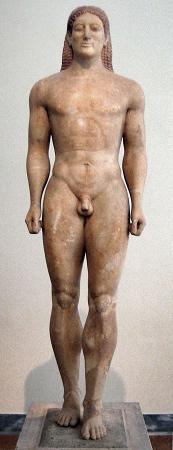National Archaeological Museum, Athens. The National Archaeological Museum in Athens houses some of the most important artifacts from a variety of archaeological locations around Greece from prehistory to late antiquity. It is considered one of the greatest museums in the world and contains the richest collection of artifacts from Greek antiquity worldwide. It is situated in the Exarcheia area in central Athens between Epirus Street, Bouboulinas Street and Tositsas Street while its entrance is on the Patission Street adjacent to the historical building of the Athens Polytechnic university. The first national archaeological museum in Greece was established by the governor of Greece Ioannis Kapodistrias in Aigina in 1829. Subsequently, the archaeological collection was relocated to a number of exhibition places until 1858, when an international architectural competition was announced for the location and the architectural design of the new museum. The current location was proposed and the construction of the museum's building began in 1866 and was completed in 1889 using funds from the Greek Government, the Greek Archaeological Society and the society of Mycenae. Major benefactors were Eleni Tositsa who donated the land for the building of the museum, and Demetrios and Nikolaos Vernardakis from Saint Petersburg who donated a large amount for the completion of the museum. The initial name for the museum was The Central Museum. It was renamed to its current name in 1881 by Prime Minister of Greece Charilaos Trikoupis. In 1887 the important archaeologist Valerios Stais became the museum's curator. During World War II the museum was closed and the antiquities were sealed in special protective boxes and buried, in order to avoid their destruction and looting. In 1945 exhibits were again displayed under the direction of Christos Karouzos. The south wing of the museum houses the Epigraphic Museum with the richest collection of inscriptions in the world. The inscriptions museum expanded between 1953 and 1960 with the architectural designs of Patroklos Karantinos. The museum has an imposing neo-classical design which was very popular in Europe at the time and is in accordance with the classical style artifacts that it houses. The initial plan was conceived by the architect Ludwig Lange and it was later modified by Panagis Kalkos who was the main architect, Armodios Vlachos and Ernst Ziller. At the front of the museum there is a large neo-classic design garden which is decorated with sculptures. The building has undergone many expansions. Most important were the construction of a new east wing in the early 20th century based on the plans of Anastasios Metaxas and the construction of a two-storeyed building, designed by George Nomikos, during 1932-1939. These expansions were necessary to accommodate the rapidly growing collection of artifacts. The most recent refurbishment of the museum took more than 1.5 years to complete, during which the museum remained completely closed. It reopened in July 2004, in time for the Athens Olympics and it included an aesthetic and technical upgrade of the building, installation of a modern air-conditioning system, reorganisation of the museum's collection and repair of the damage caused by the 1999 earthquake. The Minoan frescoes rooms opened to the public in 2005. On May 2008 the Culture Minister Mihalis Liapis inaugurated the much anticipated collection of Egyptian antiquities and the collection of Eleni and Antonis Stathatos. Today, there is a renewed discussion regarding the need to further expand the museum to adjacent areas. A new plan has been made for a subterranean expansion at the front of the museum. The museum's collections are organised in sections: Collections Section Rooms Sample inventories Prehistoric Collection 3-6 and 48. Sculptures Collection 7-34. Vase and Minor Objects Collection 42 and 49-56. Santorini Collection 48. Metallurgy Collection 36-39. Egyptian and Near Eastern Antiquities Collection 40-41. Epigraphical Museum 1, 9 & 11. The prehistoric collection displays objects from the Neolithic era, Early and Mid-Bronze age, objects classified as Cycladic and Mycenaean art.
more...








